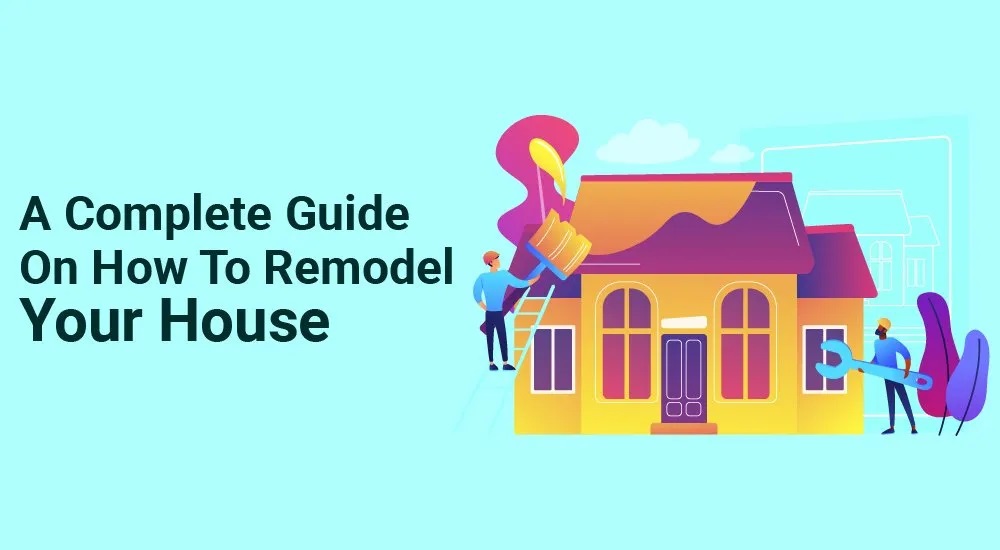Mid-Century Movies
How To Get Funding For An Injection-Mold-Driven Startup
How To Get Funding For An Injection-Mold-Driven Startup

https://moldie.net/how-to-get-funding-for-an-injection-mold-driven-startup/
A Complete Guide On How To Remodel Your House
Tips For Staging Your Home Office For More Productive In-Person and Virtual Client Meetings

[Image Source: Pexels]
Tips For Staging Your Home Office For More Productive In-Person and Virtual Client Meetings
You can find this guide and many other helpful and valuable pieces of content on the Mid-Century website.
When working from home, staging and decorating the space is crucial for both the aspect and the productivity you’re bound to get. Staging is the process of cleaning, decluttering, decorating, and organizing the rooms usually to show potential buyers the best parts of the home. This preparation helps aspiring entrepreneurs in their effort to conduct in-person and virtual meetings with customers or sell the house quickly for the highest price possible.
Stage Your Home Office for a More Productive Work Environment
Part of making your home a more appealing and more productive space is staging a home office. When you have an extra room to use as a workspace, that place creates an attractive option for many buyers in case you want to sell the house. So if you believe you might sell your home in the foreseeable future, a home office that has all the required necessities is an update that could boost your property’s appraisal value altogether. Before you proceed with the staggering and designing, ensure you take before and after photos of the office to chronicle the changes and improvements so you can sell your home at a higher price. Here’s how to stage a home office properly.
Declutter
A home office is a spot that can become quickly cluttered. Remove all the paperwork, electrical cords in view, and small objects to create a more productive and clean space. If you plan to sell, also remove family photos, certifications, and other personal stuff – these items can be distracting to purchasers who need to be able to imagine themselves using the room.
Create More Space
If your home office is small, you can create the illusion of more space by removing or changing some of the furniture, downsizing the large pieces, or simply rearranging them. Remove any furniture you don’t need, such as the extra chair or the decorative vase, and replace it with a floor lamp that doesn’t take much space. If the closet is sufficiently deep, make room to store filing cabinets inside that can be accessed when the sliding panels or the door is open.
Set Up an Organized Workspace
Both for your well-being and for a decluttered and impeccable-looking space, clear off the desk and let only a few things on it, such as a desk lamp, a computer, a notebook, and a cup of pens. This will help you feel more productive and calmer when working and arrange the stage while making the office look spotless and minimalist.
Keep It Neutral But Accessorize
While home office staging and designing, one of the main guidelines is to keep the colors neutral so the decor will inspire calmness and allow clients to feel comfortable. So, while bright colors are fantastic for keeping you motivated and energized in a home office, they should not be on the large pieces or the walls while staging.
And while it’s understandable that the home office should look professional and even sober, it should also be comfortable and inviting. You can achieve this by including a beautiful area rug, preferably with an interesting pattern or design. A few pieces of decor will also help make that space feel warmer and more magnetic. Hang some artwork on the walls, add some curtains to soften the window area, or bring in a plant – these details go a long way in making clients feel more comfortable or selling quicker.
Tips for Launching Your Business as an ECOpreneur
Tips for Launching Your Business as an ECOpreneur
If you’re passionate about environmentalism and interested in entrepreneurship, you might worry that you would have to give up on your principles to open a business. But “ecopreneurship” could be the right path for you! From making donations to hosting educational events in your community, this guide from Save First Financial Wellness outlines everything you’ll need to do to embrace ecopreneurship.
If you’ve always dreamed of launching your own business, and you’re ready for ecopreneurship, turn to Save First Financial Wellness to help turn your dream into a reality.
Legal and Administrative Tasks
First things first – you’ll need to check a few legal and administrative items off of your to-do list before your official launch!
- Lay out the details of your business’s eco-friendly offerings in a business plan by working with an experienced business consultant.
- You might have to spend a little extra on sustainable materials, so note this in your business budget.
- Form an LLC to earn special tax deductions and limited liability for your business.
- Need help with budgeting, saving, or other financial tasks? Reach out to Save First Financial Wellness.
Building Your Business
Now, you can start growing your business. Here’s how to do it while keeping your operations eco-friendly.
- Typical packaging is often wasteful, so package your products with one of these eco-friendly options.
- Live out your values by keeping the utility bills for your retail space low.
- Want to save paper? Conduct most of your marketing efforts online!
- Figure out a fair price point that keeps your products accessible to customers who want to shop at sustainable small businesses.
Connecting With Your Community
You want your business to make a positive contribution to the world. Community outreach will allow you to do just that.
- Get to know other ecopreneurs in your area through networking.
- Partner up with an environmental charity to raise money for important causes.
- Bring people into your retail space for educational or philanthropic events!
Figuring out how to manage your business in an eco-friendly way can be challenging. But it isn’t impossible by any means. With a little perseverance, you can become a successful ecopreneur by providing a product or service that makes the world a better place!
Photo via Pexels
Orchid Cryptocurrency, The Crypto Powered VPN
How to Start a Small Business in the U.S. as a Non-Citizen

Small businesses are vitally important to the American economy. Consider the following statistics provided by the Chamber of Commerce: There are 30.2 million small businesses operating in the U.S. which collectively make up 99.9% of total U.S. businesses, employ 49.2% of the American workforce, and are responsible for 60-65% of net new jobs — amounting to around 2 million new jobs per year.
https://www.remitfinder.com/blog/how-to-start-a-small-business-in-the-us-as-a-non-citizen
How You Can Help Small Businesses Impacted By Covid-1
The fully accessible guide to starting a business with a disability
https://www.creditcards.com/credit-card-news/accessible-guide-for-disabled-entrepreneurs.php
Although entrepreneurs with disabilities can face unique financial hurdles, the benefits from self-employment far outweigh these challenges. Our experts have assembled a guide providing insight on the options and resources available to entrepreneurs with disabilities, such as:
- Programs designed for entrepreneurs with disabilities
- Key steps in developing a business plan
- Building credit and funding your business
Articles:
Read This Before You Make The Leap To Homeownership
Read This Before You Make The Leap To Homeownership
Buying your first home is a big deal. Excitement aside, there is lots of preparation to do and many things to consider before you make the transition from renter to homeowner. Keep reading for tips and advice on how to walk this road without wandering astray.
Question Everything
Before you reach out to a real estate agent, it’s best to ask yourself if you are really ready for homeownership. Architectural Digest asserts that your best bet is to pursue a home purchase only if you plan to be at the same place for at least five years. You’ll also want to take an in-depth look at your finances to make sure you can afford the expense.
Owning a home costs more than just the monthly mortgage — you have to pay to maintain it and keep the lights on, too. And, like when you apply for rent, your mortgage lender will want to know that you can comfortably afford your mortgage payment. To do this, they look at many factors, including your income, debt-to-income ratio, and credit history, which can quickly get your mortgage application rejected, and the property itself.
Just as your lender will look at the value of the home, you also have to consider the type of property you plan to purchase. This is because some loans are better suited to certain properties and buyers. A rural housing loan, for example, may be used by low-income buyers to purchase a certain type of dwelling in a rural area. First-time buyers with little money down may want to opt for an FHA loan, which requires a lower credit score than a conventional loan.
A Narrow Path
Once you have answered the questions of whether you are ready to own a home, and if you can afford it, you can start the house hunting process. Get ready, because this can actually get overwhelming quickly. You can reduce stress and anxiety by narrowing down your selections based on your finances and needs.
In addition to price, The House Designers says to keep your search focused on homes that have the minimum number of bedrooms and bathrooms you need. If you like to cook, avoid houses with tiny kitchens. Pay close attention to location, and get familiar with local school zone maps – never assume that your house is zoned for the school you desire just because it’s close.
As you filter your search, there will be fewer homes to choose from, but that means you can focus your attention on properties that are more likely to work. Another tip: talk to your spouse or partner before making your priorities list. You may find that you have wildly different ideas on the type of house you want, and it’s best to come to a compromise before you drive yourself crazy taking turns looking at houses that one of you despises.
In Order And Ready To Sign
Now you’ve found a house that everyone loves, the hard work can begin. With your down payment in-hand, it’s time to make an offer. The real estate climate can help you determine whether you want to offer asking price, less, or more. Your realtor can also help you look at the home and comparable properties to make a fair and objective offer.
When your offer is accepted, things will move quickly. You’ll have a home inspection, appraisal, and will be in constant touch with your mortgage lender. There may be some back and forth, especially if issues are found with the property or if it appraises for less than you’ve offered.
It usually takes between four and eight weeks to get to closing day, which is when you pay your part of closing costs and take possession of your new home.
Your realtor is the best person to help you through the process, which may be smooth sailing or a bumpy road, depending on your credit and homes available in your area. Careful preparation is the key to success. The above advice can get you started and will hopefully give you a few things to think about before you take the plunge.

Image via Pexels
Articles: https://www.bankrate.com/mortgages/best-lenders/low-credit-score-mortgage-lenders/



